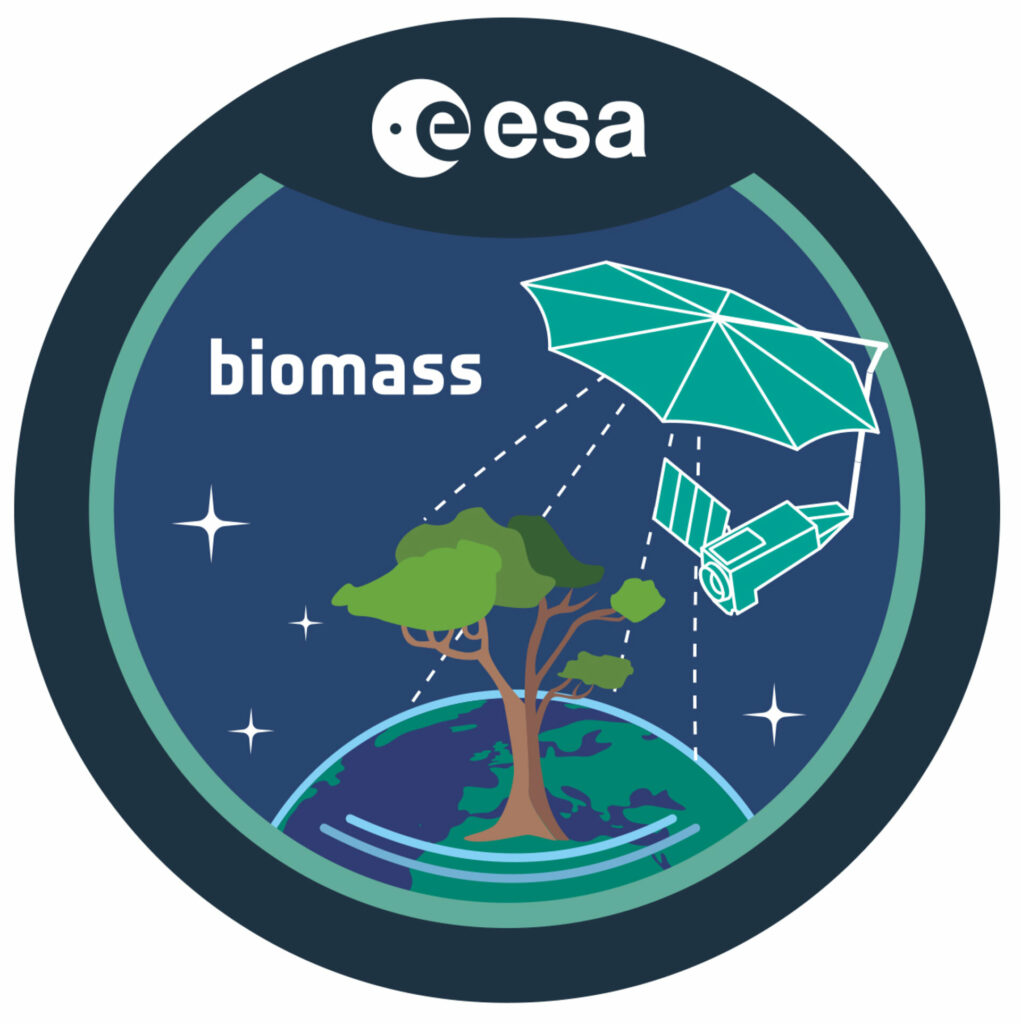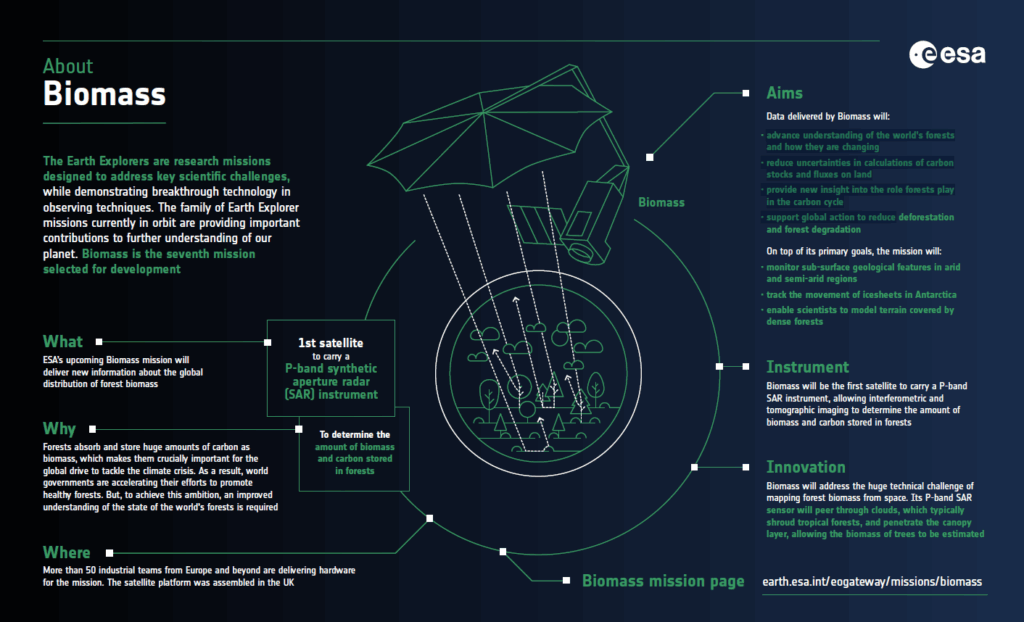BIOMASS mission

The new Earth Explorer BIOMASS will improve our understanding of the role of the land biosphere on the global carbon cycle, with clear implications in a context of climate change. With the help of remote sensing, the mission is the first with an operational space-borne P-Band SAR, it will collect data on the state of mainly tropical forests.
Mission Objectives
Worldwide distribution of forest above-ground biomass
Generate the first global forest biomass maps, assessing the amount of carbon stored in the world’s forests and how this changes over time
Advanced knowledge of the global carbon cycle
Support global action to reduce uncertainties in calculations of carbon stocks and fluxes on land and provide new insight into the role that forests play in the carbon cycle
Science support for policy
Provide scientific support for international treaties, agreements and programmes
Find out more here.
Secondary Mission Objectives
Subsurface Geology Mapping
The first opportunity to map paleo-hydrology at continental scale in regions where water resources are a serious issue
Ice Flow Measurements
A unique way to measure the seasonal variation of large ice
sheets in relationship with climate change monitoring
Digital Elevation Model
An efficient way to obtain the surface topography under dense vegetation (then useful for biomass measurement)
Ocean Surface Properties
A new way to look at ocean surface structures + a unique
sensitivity to discriminate between fresh/saline water

